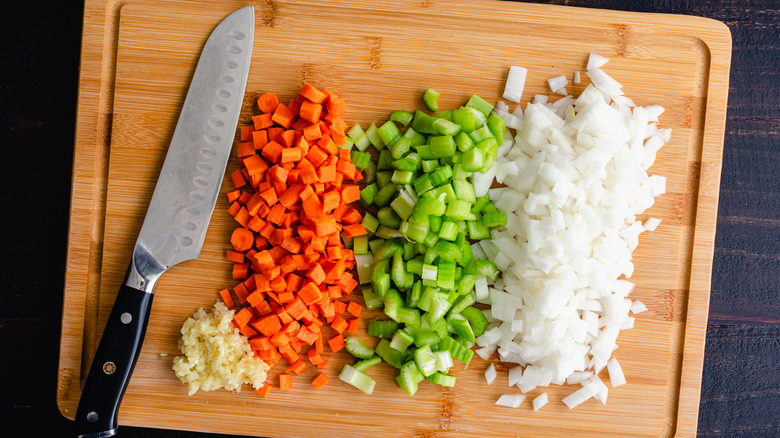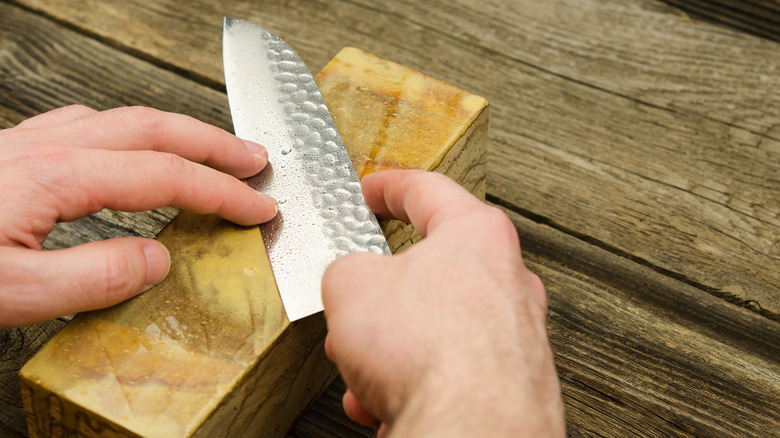Giada De Laurentiis' Favorite Knife Is Incredibly Versatile
Whether you're the star of several cooking shows, or you simply consider yourself a seasoned home cook, every chef has a favorite knife — and Giada De Laurentiis is no exception. Calling a knife one of the most important items in her kitchen, De Laurentiis tells CNN Underscored that, when it comes to choosing a go-to utensil, "You want one that feels good in your hand."
Her reasoning is certainly sound; the more comfortable you are with a knife, the better you'll be able to use it. And the quality utensil that this culinary whiz likes to use in order to cook the recipes that made her famous just so happens to be a trusty Japanese Santoku Chef Knife. Not only is it ideal for chopping, slicing, and dicing because it feels light and is easy to use, but it's built strongly and gets the job done well. It's also incredibly versatile, meaning there are so many ways you can use it to its full potential.
What makes the Japanese Santoku Knife so versatile
Giada De Laurentiis' favorite knife is a great choice for any cook. But what is a Santoku Knife, why is it so versatile, and how is it different from your typical sharp kitchen tool?
The Japanese word santoku actually translates to "three virtues" or "three purposes." It's a fitting name for a knife that's designed to excel at cutting three different foods (meat, fish, and vegetables) in three different ways — chopping, dicing, and mincing. Truly a multi-purpose knife, the Santoku is great for everything from precision cutting fruits and vegetables to julienning slices of meat to scoring and fileting fish.
The reason the Santoku is so versatile is because of the way it's made. The blade itself is shorter, thinner, and crafted with a more durable steel than most chef knives, which gives it its accuracy and allows it to hold up to multiple uses. Its straight-edge blade that curves into a very sharp tip is also designed for precision. And because the knife is lighter in weight, it's generally easy to use, no matter how you plan to work with it.
De Laurentiis' advice: Don't forget to sharpen it
A knife is only as good as the condition it's in, so it's one of those things in your kitchen that's imperative to care for — especially because it's one of the most-used items when you cook. According to CNN Underscored, Giada De Laurentiis sharpens her Santoku every day. This not only protects the blade (and potentially your fingers) from damage, but also helps keep the utensil performing its best.
The best way to sharpen a Japanese knife like a Santoku is with a whetstone. A whetstone is simply an umbrella term for a sharpening stone that's used to refine the edge of steel tools; it's a grained stone that's often flat and can be made with various materials. For Japanese knives, the whetstone is usually splashed or soaked in water during the sharpening process.
It takes some practice to properly sharpen a knife on a whetstone, but it essentially involves gliding the knife forwards and backwards across the length of the stone at a specific angle. With a whetstone, you can control exactly how sharp you prefer the blade, and restore any blunt edges to the optimal condition the knife was designed for so you can use it for years to come.



